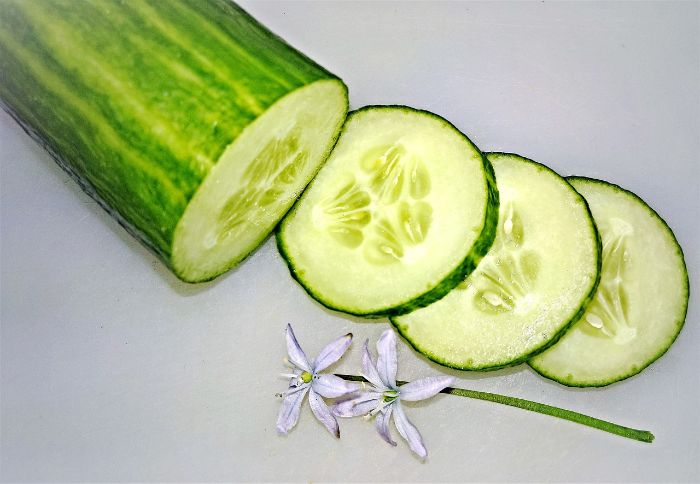Bell peppers are a gift from nature, full of nutrients. They come in many colors and are crunchy. They make your meals look good and are full of vitamins and antioxidants. Each color of bell pepper has its own health benefits. Let’s explore what makes them so special.
Table of Contents
The Nutritional Power of Bell Peppers
Bell peppers are not just tasty, they’re also packed with nutrients. They come in many colors and flavors. This makes them a great addition to many dishes.
Overview of Bell Pepper Varieties
Bell peppers have different colors like red, yellow, orange, and green. Each color has its own health benefits. The nutritional value changes with the color.
Importance of Color in Nutrition
The color of bell peppers tells us about their nutrients. The bright colors mean they have lots of antioxidants and phytochemicals.
Red bell peppers are full of vitamin C and beta-carotene. These turn into vitamin A in our bodies. Yellow bell peppers have vitamin A, lutein, and zeaxanthin for eye health. Orange bell peppers have beta-cryptoxanthin, which helps the immune system and fights inflammation. Green bell peppers are high in fiber and vitamin K, good for digestion and bones.
Adding different colored bell peppers to your meals gives you a mix of nutrients and antioxidants. The colors make your food look good and taste great. They also give you a nutritional boost.
Red Bell Peppers
Red bell peppers are both colorful and full of nutrients. They make your meals look bright and are good for your health.
Red bell peppers are packed with vitamin C. Just one medium-sized pepper gives you 169% of what you need daily. Vitamin C boosts your immune system and fights off harmful damage in the body.
They also have a lot of beta-carotene, which makes them red. When your body uses beta-carotene, it turns into vitamin A. Vitamin A is key for good eyesight and a strong immune system.
Red bell peppers have more than just vitamin C and beta-carotene. These antioxidants lower inflammation and stress. They might even help prevent heart disease and some cancers.
Yellow Bell Peppers
Yellow bell peppers are not just pretty with their bright color. They also have lots of good stuff for your health. They taste milder than red and orange ones. You can eat them raw or cook them.
Source of Vitamin A
Yellow bell peppers are full of vitamin A. Eating half a cup of raw pepper gives you 13% of what you need daily. Vitamin A helps your eyes stay healthy, keeps your immune system strong, and helps cells grow.
Benefits of Lutein and Zeaxanthin
Yellow bell peppers also have lutein and zeaxanthin. These are important for your eyes. They protect your eyes from UV rays and stress. This lowers the risk of eye problems as you get older.
Role in Eye Health
Lutein and zeaxanthin in yellow bell peppers are great for your eyes. They go right to the retina and lens, protecting them. They stop blue light and free radicals from harming your eyes. This helps keep your eyes healthy for a long time.
Want to boost your eye health and eat something tasty? Add yellow bell peppers to your meals. They’re full of vitamin A, lutein, and zeaxanthin. These help keep your vision clear and your eyes healthy.
Orange Bell Peppers
Orange bell peppers are bright and full of nutrients. They taste sweet and are crunchy. They are packed with beta-cryptoxanthin, an antioxidant that’s good for you.
Abundance of Beta-Cryptoxanthin
Beta-cryptoxanthin makes orange bell peppers colorful. It also has many health benefits. This antioxidant can lower the risk of lung cancer and boost lung health.
It helps keep your eyes healthy and your skin looking good.
Immune System Support
Orange bell peppers are full of beta-cryptoxanthin. This helps your immune system work better. It fights infections and diseases naturally.
Anti-Inflammatory Properties
These peppers also have anti-inflammatory effects. This can help prevent diseases like heart disease and diabetes. Eating them can reduce inflammation and keep you healthy.
Orange bell peppers make your meals taste better and are good for you. Enjoy them raw, roasted, or in stir-fries. They support your immune system and overall health. Add them to your diet for more nutrients and antioxidants.
Green Bell Peppers
Green bell peppers are the young, unripe form of bell peppers. They taste slightly bitter and are crunchy. Half a cup of raw green bell pepper gives you 2.1 grams of fiber. Fiber is key for good digestion, helping with regular bowel movements and stopping constipation.

High Fiber Content
Green bell peppers are packed with fiber, which is great for health. Fiber keeps blood sugar levels stable, makes you feel full, and helps with weight control. It also feeds good gut bacteria and lowers the risk of gut problems.
Vitamin K and Bone Health
Green bell peppers are full of vitamin K, important for bones. Vitamin K helps make proteins that use calcium well, keeping bones strong. Eating green bell peppers can lower the chance of osteoporosis and broken bones.
Chlorophyll Benefits
The bright green color of green bell peppers comes from chlorophyll, a plant pigment. Chlorophyll is linked to antioxidants and anti-inflammatory effects. Eating foods high in chlorophyll, like green bell peppers, boosts wellness and fights chronic diseases.
Comparing Nutritional Profiles
Each color of bell pepper has its own set of nutrients. Let’s look at the vitamins and antioxidants in different colors. We’ll also see the best ways to use each color in recipes.
Vitamins Across Different Colors
Red bell peppers are full of vitamin C. Vitamin C helps keep the immune system strong and supports collagen. They also have beta-carotene, which turns into vitamin A in the body. Vitamin A is good for the eyes and keeps skin healthy.
Yellow bell peppers are a great source of vitamin A. This vitamin is key for good vision and keeps the immune system and organs healthy. They also have lutein and zeaxanthin, which are good for the eyes.
Orange bell peppers are full of beta-cryptoxanthin, a type of vitamin A. This helps the immune system and can lower the risk of chronic diseases.
Green bell peppers may not be as ripe as others, but they’re still nutritious. They’re a good source of fiber, which is good for digestion and blood sugar control. They also have vitamin K, important for bones and blood clotting.
Antioxidant Levels
Bell peppers also have antioxidants, which protect cells from damage and lower the risk of chronic diseases. Red bell peppers have the most antioxidants.
Best Uses for Each Color in Recipes
Each color of bell pepper is great for different dishes. Red bell peppers are sweet and tangy, perfect for roasting or adding to salads. Yellow bell peppers are milder and work well in stir-fries or salads. Orange bell peppers are sweet and fruity, great for grilling or adding to soups. Green bell peppers are crisp and bitter, good in stir-fries or on pizzas.

Using different colors of bell peppers in your cooking gives you a variety of vitamins, antioxidants, and flavors!
Health Benefits of Bell Peppers
Bell peppers are tasty and bright in color. They also have many health benefits. Adding them to your diet can improve your health in many ways.
Boosting Immune Function
Bell peppers are great for your immune system. They are full of vitamin C, an antioxidant that boosts immune function. Vitamin C helps make white blood cells, which fight infections and diseases.
By eating bell peppers, you help your immune system stay strong and healthy.
Supporting Digestive Health
A healthy digestive system is key for your overall health. Bell peppers have a lot of fiber, which helps with digestion and keeps bowel movements regular. Fiber stops constipation by making stool bulkier and helping it move through your body easily.
Eating bell peppers can help keep your digestive system running smoothly and prevent stomach problems.
Promoting Skin Health
Your skin is your body’s biggest organ, and it’s important to keep it healthy. Bell peppers are full of antioxidants and compounds that protect and feed your skin. These antioxidants fight off free radicals that can harm skin cells and cause aging.
They also help make collagen, which keeps your skin firm and young. Adding bell peppers to your meals can make your skin look healthy and bright.
Eating bell peppers can help your immune system, digestive health, and skin. Add these colorful veggies to your meals for their nutritional benefits.
Conclusion
We’ve looked at how bell peppers are good for our health. They taste great and are full of vitamins, antioxidants, and other good stuff.
Each color of bell pepper has its own special benefits. Red ones are packed with vitamin C. Yellow ones help keep your eyes healthy.
Eating bell peppers can make your immune system stronger, help your digestion, and make your skin look great. They make your food colorful and give you important nutrients.
So, let’s enjoy the good stuff in bell peppers. Add them to salads, stir-fries, or fajitas. They make your food taste better and are good for you.
FAQ
What are bell peppers?
Bell peppers, also known as sweet peppers or capsicums, are fruits. They belong to the nightshade family. They come in colors like red, yellow, orange, and green.
What vitamins and antioxidants do bell peppers contain?
Bell peppers are packed with vitamins like vitamin C, A, B6, K1, and E. They also have minerals like potassium. Plus, they’re full of antioxidants and compounds like carotenoids and phenols.
How do the different colors of bell peppers vary in terms of nutrition?
Each color of bell pepper has its own benefits. Red ones are full of vitamin C and beta-carotene. Yellow ones are rich in vitamin A and have lutein and zeaxanthin. Orange ones are full of beta-cryptoxanthin. Green ones are high in fiber and vitamin K.
What are the health benefits of red bell peppers?
Red bell peppers are known for their sweet taste and bright color. They’re a great source of vitamin C and beta-carotene. These help protect against damage, inflammation, and some diseases.
What are the health benefits of yellow bell peppers?
Yellow bell peppers are full of vitamin A and have lutein and zeaxanthin. These are good for eye health. They protect the eyes from UV rays and reduce the risk of eye diseases.
What are the health benefits of orange bell peppers?
Orange bell peppers are full of nutrients that boost health. They’re rich in beta-cryptoxanthin, which lowers lung cancer risk. They also have anti-inflammatory properties to reduce chronic inflammation and health risks.
What are the health benefits of green bell peppers?
Green bell peppers are the young, unripe form. They taste slightly bitter and are crunchy. They’re full of fiber and vitamin K, helping with digestion and bone health. They also have chlorophyll for antioxidants and anti-inflammatory effects.
What are some health benefits of consuming bell peppers?
Bell peppers are great for boosting the immune system and digestive health. They help with skin health and give essential vitamins and antioxidants for overall well-being.










